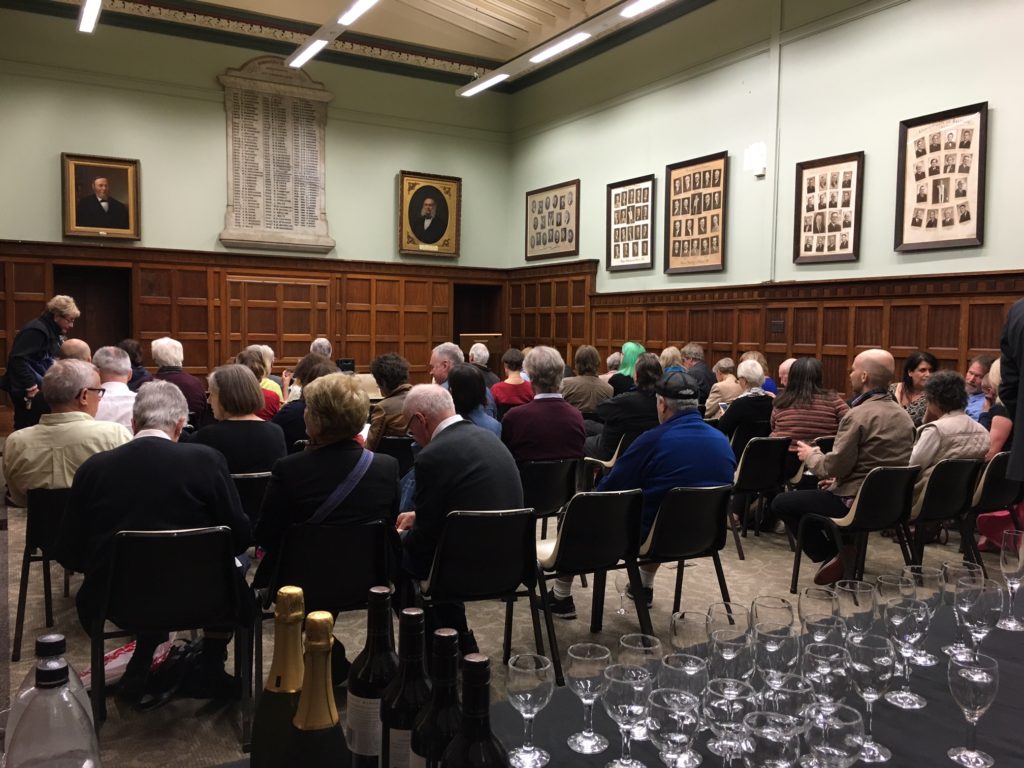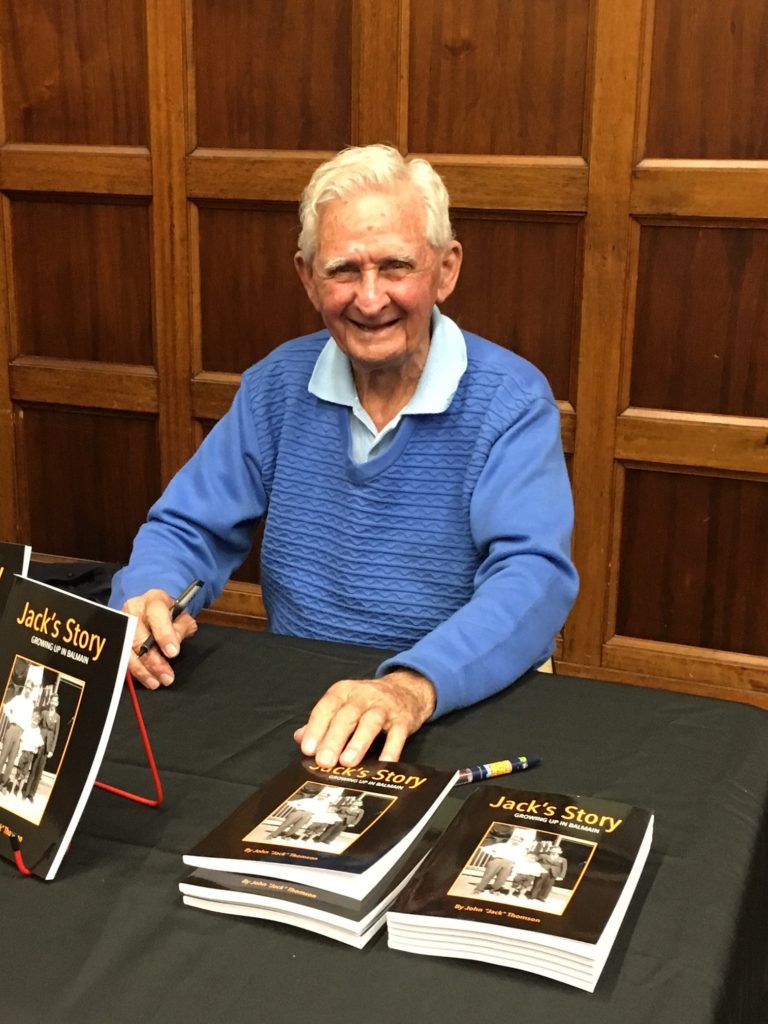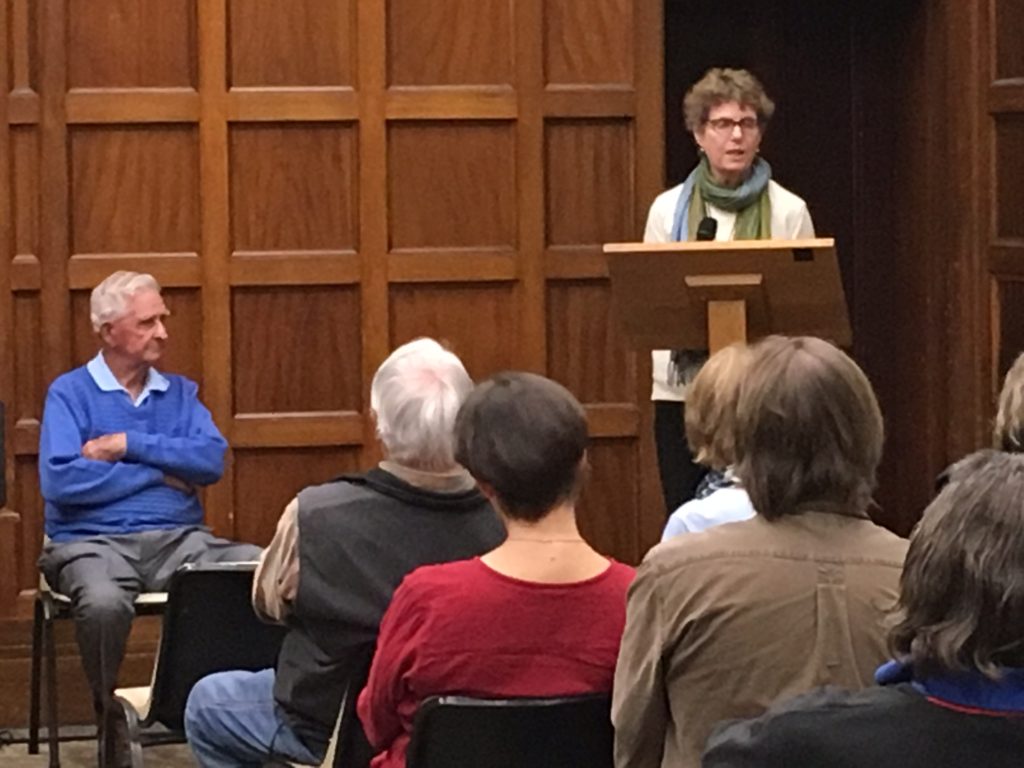A crowd of 80 gathered at Balmain Town Hall Meeting Room for the launch of Jacks’ Story
The outcome of a Local History Grant from the former Leichhardt Council.
A well received publication on Jack’s story growing up in Balmain. With the assistance
of Rural Writer, Journalist and Author Asa Walquist, Jack has become a local star over night.
The book has been the top seller at Brays book four weeks in a row.
You can buy the book from Balmain Library or Brays Books rrp $15.00


Over the past four weeks, the book that’s been Bray’s Bookshop’s best seller has been a home-grown autobiographical memoir authored and privately published in paperback by a local octogenarian, John ‘Jack’ Thomson, whose entire life’s been spent in and around Birchgrove.
The book’s titled ‘Jack’s Story: Growing Up in Balmain’ and it’s on sale for $15:00 from Bray’s, with surplus proceeds from the sale going to the Children’s Hospital at Westmead.
Of Scots descent through both parents, Jack’s initial connections were with Campbell Street Presbyterian Church.
He married a local girl at St John’s in Arthur Rix’s last years as rector.
Having had some help with editing and design, Jack’s book is a fluid and engaging read.
Its narrative reminded me of Dickens’s novel, ‘Hard Times’, though the prose is in contemporary language – and Jack’s story is actual and unfolds in the antipodes.
While the hardship that Jack experienced in childhood would seem implausible to the minds of today’s younger generation, it was all too common during the Balmain peninsula’s harsh interwar years, when the local population exploded to some 31,000 plus people, of whom most were squashed into overcrowded tenement housing.
(As head-lice abounded when bathrooms were primitive, meningitis killed innumerable children – as did tetanus, diphtheria, and tuberculosis.)
Jack’s father was diagnosed with paranoid schizophrenia when Jack was aged four.
He was committed to Callan Park Hospital for the Insane, where he stayed for the rest of his life and, according to Jack, very well looked after.
Jack’s working mother (on two thirds of a male wage) contracted tuberculosis and died when Jack turned nine.
Jack – effectively an orphan – was reared by a neighbouring family who’d taken him in (and that kind of neighbourly action was by no means isolated at that time).
His life progressively improved and he wrote his autobiography primarily for his grandchildren’s benefit but it’s been absolutely extraordinary the extent to which his book has captured the attention of a wide and diverse audience of readers.
One of the misspellings that has persisted into a reprint is that of Wally Pinerua, who operated a Darling Street pharmacy – at least until the late 1950s.
What made this pharmacy unusual was the huge red neon illuminated sign over the footpath awning.
Pinerua’s predecessor had bought Bayer’s patent for a prescription drug, heroin hydrochloride, which was highly effective in managing intractable pain in terminal cancer patients and patients who’d suffered severe trauma through injury or surgery.
As the addictive properties of the drug were well known at the time, dispensaries kept it under lock-and-key.
As the R & R boys on leave from the war in Vietnam used the drug recreationally, heroin thus became a prohibited narcotic.
Another misspelling is the name of the nearby general store, Gourlies.
John Williams.
